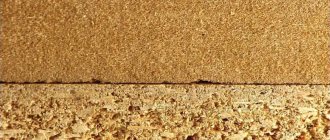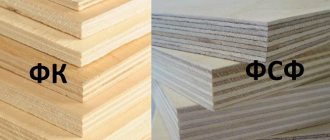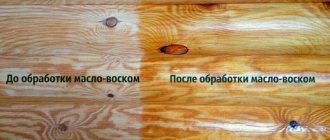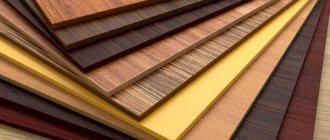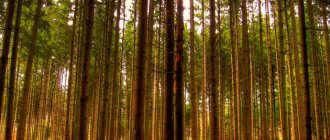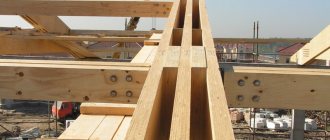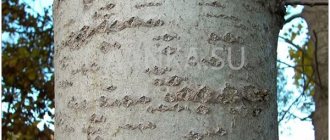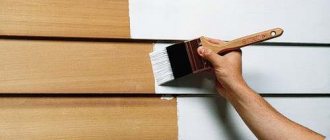In addition to traditional lumber made from natural wood, materials based on wood fibers and ordinary shavings have long been used for use in a variety of structures. In practice, the use of fiberboard and chipboard boards can significantly save forest resources, because they are made practically from industrial waste. But, despite the similarity and the same raw materials for manufacturing, these materials have different technical characteristics and purposes. That is why, in order to use them correctly, you need to know how fiberboard differs from chipboard.
Chipboard - characteristics and purpose
The production of chipboards or chipboards is based on pressing technology with sequential heating. The main raw materials for production are sawdust from coniferous and deciduous trees. After cleaning and grinding to the required fraction, the sawdust is mixed with an adhesive composition and, after forming a homogeneous mass, goes into a pressing-drying machine. This is where the formation of particle board occurs.
Under a hot press, a texture is formed in which the sawdust of the outer layers forms a monolithic dense layer, and the inner one has a looser consistency due to the unstructured arrangement of the sawdust. After drying at a temperature of about 190 degrees, the material is able to withstand heavy loads and is used as a basis for the manufacture of furniture, the construction of partitions and for the decorative design of premises.
The advantage of such a chipboard sheet is its density. The industry produces different sizes of slabs, the thickest having a thickness of 50 mm. Chipboards are easy to saw with a hand and electric saw. When processed, like natural wood, it can be sanded, milled, impregnated with impregnations, applied with a decorative coating and painted.
The smooth surface of the sheet allows you to make figures of different shapes from it; unlike wood, it does not have fibers oriented in a certain direction. But on the other hand, unlike wood, chipboard slabs are not able to withstand the load that boards of such thickness can withstand.
The range of particle boards includes boards for different purposes:
- Unpolished slabs;
- Sanded chipboard;
- Laminated chipboard;
- Chipboard is waterproof.
They vary in density and water resistance. During installation, fastening is carried out using the adhesive method, using self-tapping screws, screws, nails and furniture bolts.
The disadvantages of the material include poor water resistance, the impossibility of reusable use for installation in construction - holes for fastenings must be made in another place.
Chipboard: application and benefits
Chipboards are used today mainly in repair work and in furniture production. Often they become the basis for the frames of inexpensive sofas, kitchen corners, kitchens and much more.
High-density chipboards are able to withstand fairly large loads on their surface; moreover, they do not crack when screwing in self-tapping screws to secure various structures or boards together. The difference between fiberboard and chipboard in this case becomes more obvious, since fiberboard boards, due to their small thickness, cannot be used to create frames for heavy furniture or structures.
The difference between fiberboard and chipboard lies largely in their advantages.
The chipboard has the following:
- low cost of such slabs due to the use of simple technologies during creation, as well as low-grade wood;
- are manufactured in a convenient format, which allows you to quickly create any design from it;
- homogeneous structure;
- good strength.
Fiberboard or chipboard - there is no choice, since these materials are used in their narrow field and, in fact, complement each other.
Fiberboard
Fiberboards are similar in manufacturing technology to chipboards. The only difference in this technology is the raw materials. If crushed shavings or sawdust are used for chipboard, then wood flour or wood dust is used for fiberboard. The binding components also differ; in the first case these are not mineral adhesives, in the second they use synthetic fibers and polymer additives.
The rest of the technology is similar, pressing at high temperatures. The prepared mass is rolled out to the required thickness, after which it enters the drying press. As a result, after drying, a canvas with a thickness of 2 to 10 mm is obtained.
Fiberboard is dense, which is why it is often used for packaging equipment and machinery. Along with its density, it bends easily and takes the desired shape. It is even easier to attach it to structures - it is easily fastened with nails, self-tapping screws and, importantly, construction staples.
Wood fiber sheets are used in construction, design, and even art. Just like chipboard, there are several types of fiberboard - plain, laminated, painted and sanded.
General characteristics
Chipboard (chipboard) is a sheet material created by fastening waste from wood processing. Bonding occurs using thermoactive substances at high temperatures and high pressure. You can visually distinguish chipboard by seeing large particles of wood. The thickness of the slabs is 10mm or more.
Fiberboard or fibreboard is a material similar to chipboard. Its main distinguishing property is the finer grinding of wood particles. The technology for manufacturing fiberboard consists of forming the fibers of the fabric in the form of a carpet. In this case, paraffin, synthetic resins and other similar materials are used. Externally, fiberboard resembles cardboard. The thickness of such a plate can be 2.5 – 7 mm.
What are the similarities and differences between chipboard and fibreboard?
When comparing chipboard and fiberboard, it is necessary to understand the purpose and conditions of use of the material. With the same thickness and size of materials, the difference will be observed primarily in mechanical strength. Particle boards can withstand greater loads than fibreboards. The difference when examining the cut is immediately noticeable - in the first one you can see chips of different sizes, and in the second one, it has a homogeneous mass. The sheets will look different even after exposure to moisture - wood chips will swell even after being in water for a short time. For wood fiber sheets, short-term exposure to water is not dangerous.
With the same thickness, the thermal insulation properties of fiberboard are higher, but when loaded, the advantage is on the side of chipboard. The differences also lie in the quality in which one or another material will be used. Chipboard panels have found application in construction and the production of cabinet furniture. Fiberboard is mainly used as raw material for packaging and decoration. The only place where you can’t do without it is in the manufacture of cabinet furniture - all the back walls of cabinets and chests of drawers, as well as the bottoms of drawers, are made of high-quality fiberboard.
Use cases and disadvantages
Calculate the exact cost of repairs using an online calculator
and receive a free detailed estimate for repairs
Calculate
With the help of chipboard, during repair and construction work, the so-called dry screed and installation of flooring are done. Chipboard is used as a continuous sheathing to strengthen the vertical base. In addition, particle boards are used for the construction of canopies, partitions, fences, decking, chests, and some pieces of furniture - most often beds and tables.
Photo: architizer.com
Photo: architizer.com
The disadvantages of chipboard include some looseness and hygroscopicity of the material, as well as rigidity, which provokes cracks in the board when trying to attach it to an uneven base. These nuances should be taken into account in the construction design project.
It is not recommended to use chipboard in conditions of constant dampness or frequent changes in humidity - the service life of such structures can be sharply reduced. The repeated use of particle boards is also questionable - they cannot be used to make prefabricated structures, because reinstalling fasteners leads to the fact that the material on this segment begins to crack and break, and the screws or self-tapping screws no longer hold the board.
Photo: mit24h.com
Particle boards come in low, medium and high density, medium and high water resistance, and sanded, unsanded and laminated. Boards with increased water resistance are usually used in the manufacture of countertops for kitchens, bathroom furniture, and special construction purposes. Laminated chipboards have a variety of colors and textures, resistance to mechanical damage and thermal effects.
Photo: ca-news.org
Photo:
Photo: mit24h.com
Which material is better to choose
The use of this or that material depends on the conditions where it will be used and the tasks that are assigned to it. To insulate the floor, you can use both materials as a substrate for the final coating. But at the same time, if the floor has uneven surfaces, preference is given to chipboard panels, and if the finishing screed is made with high quality, an ordinary fiberboard sheet with a thickness of 4-5 mm is sufficient.
In the manufacture of cabinet furniture, chipboard is used for the walls and facade; it is entrusted to become load-bearing walls. But for fiberboard there is only application in the form of a back wall. On the other hand, it is more often used for the design and manufacture of upholstered furniture - sofas, trestle beds, couches. Due to the fact that fiberboard can be bent, backs and sides are obtained from it.
These materials also find their use in construction. Both chipboard and fibreboard are used for internal partitions, however, given their characteristics, they are not suitable for rooms with high humidity. On the other hand, a partition made from chipboard is not only stronger, but also cheaper - the frame for it will cost less than for fiberboard.
Knowing all these features, it is not difficult to determine the possibilities of using materials in practice. But be that as it may, working with them does not require great skills and abilities.
Fiberboard: application and benefits
Fiberboard is a wood fiber board that has a uniform structure and color. In appearance they resemble thick cardboard. This product has light perforation on one side. This material is used for various purposes, but mainly in the manufacture of furniture for cladding. The service life of fiberboard can be measured for tens of years, depending on operating conditions.
What is thicker: fiberboard or chipboard? Of course, chipboard, the thickness of which can reach 5 cm, while fiberboard is more elegant. The main characteristics and advantages of fiberboard sheets include:
- good level of moisture resistance – can be used at humidity levels up to 85%;
- low cost of products;
- durability.
To improve the aesthetic properties of fiberboard-chipboards, the boards are covered with special decorative melamine films, which protects them from external influences. This technique has found its application in the manufacture of furniture structures.
MDF
Production technology: produced in the same way as chipboard, but using smaller wood particles - less than 1 mm. The standard thickness of MDF sheet is from 1.8 to 50 mm.
| Advantages: | Flaws: |
| + Possibility of applying patterns and other additional processing | — Low strength |
| + Moisture resistance | - Vulnerability to high temperatures |
| + Protection against fungus |
MDF boards
Comparative characteristicsarrow_upward
Moisture resistance
Moisture resistance. Chipboard
,
fiberboard
and
MDF
are considered moisture resistant.
chipboard
has the lowest moisture resistance property .
This material, when used in very humid areas, swells and deforms. According to studies, MDF
.
Products made from MDF
can be used in rooms where humidity reaches 80%.
Environmental friendliness
Environmental friendliness. Fiberboard
and
MDF
are highly environmentally friendly materials.
But in the manufacture of chipboards,
formaldehyde resins are used.
Therefore, when using furniture made from chipboard
, a small amount of formaldehyde is released into the air, which is not beneficial, but the minimal amount of formaldehyde released is completely safe for humans.
Sources and reasons for the constant release of formaldehyde from wood-based materials
Price
Price. The most economical, i.e. chipboard is rightfully considered an option
.
The price for fiberboard
is higher.
However, the durability of fiberboard
is also higher compared to
chipboard
.
MDF
, of course, is more expensive than
fiberboard
and
chipboard
.
However, the price of this material consists not only of the cost of its production, but also of transportation costs. It should be noted that the production of MDF
in Russia has not been established.
How to choose material depending on the room
To correctly determine the material for making interior items for different rooms, you need to take into account some recommendations.
Each variety is created for its own purposes, so to unequivocally state that some material is better or worse is completely wrong
Furniture in the hallway
This is a room with high traffic and changes in temperature and humidity. Water carried in from the street can create problems. Therefore, for furniture in this room there are the following rules:
- The standard economy option involves the use of products made entirely of laminated chipboard. But all external edges are processed with 2 mm PVC edge, and internal edges with 0.4 mm. An alternative for some areas may be a printed edging. Particular attention is paid to racks directly located on the floor: they are additionally raised above the surface using special “boots”.
Melamine and thin (up to 1 mm) PVC or ABC tape is considered an unreliable option, it is used only for processing internal surfaces, the outer edge is treated with an edge of 2 mm, while the highest protection is provided by PVC and aluminum moldings under the milled groove
- A better solution involves combining materials. For facades, MDF is used, where in the frame version HDF is suitable for insertion. The body is made of laminated chipboard with maximum edge processing.
On a note! If the lower ends are not protected, they can be additionally coated with silicone sealant.
A box assembled from laminated chipboard and decorated with an MDF facade significantly reduces the price of the headset, without losing quality in operation or appearance
Kitchen set
Although medium-density fiberboard is the optimal solution for high humidity environments, it is not used for all kitchen items. Therefore, when they say that a product is made of MDF, it means exclusively the facades or the top of the dining table.
For the kitchen, the same rules apply as for the hallway, but there are additional nuances:
- The tabletop set must be moisture resistant. This protective impregnation is clearly visible on the cut: most often it gives the structure a greenish tint.
An ordinary laminated chipboard sheet is not suitable for a tabletop; such a board must be thicker and denser than the façade material and have a higher moisture protection class - It is better to abandon chipboard facades with melamine edges. It is easy to distinguish: the surface feels like very thick paper. The best solution is to process it with 0.4 or 2 mm PVC tape. The last option has slightly rounded corners.
The ends of objects located next to the stove must be covered with a special aluminum cover. The hanging elements are positioned to minimize the ingress of steam.
In kitchen sets, it is not so important whether the facade is made of MDF or laminated chipboard, the main thing is to choose a good countertop and provide protection from moisture in the floor area
Children's room and bedroom
Furniture for a child’s room (as for any other premises) must have mandatory certification. But unlike previous objects, children's beds can be made entirely of MDF. Particular attention is paid to the internal stiffeners on which the mattress cover is located: such parts are made of wooden beams, which provide the necessary strength and reliability.
Both MDF and laminated chipboard are widely used for the production of children's furniture; in this case, it is not so much the material that is important, but the level of trust in the brand
The remaining pieces of furniture should be as functional as possible. They are subject to the following requirements:
- For children under 6–7 years old, it is better to choose products with rounded edges, which is inherent in milled parts with a wood-fiber structure, or equip them with special pads.
- The fittings should be selected with smooth closing of the facades, which will prevent injuries.
Furniture for the bedroom and walls in the living room is selected based on personal preferences, but the best solution would be a combination of MDF and laminated chipboard.
Difference in security level
Phenol-formaldehyde resins are used to produce chipboard. The difference is that they pose a risk to human health. But most manufacturers are constantly working on the safety of such products. As a result of their intensive work, it was possible to coat with a composition such as urea. This product is characterized by a low degree of toxicity. Today, chipboards produced in Germany and Austria are in great demand. There is also a laminated version, so it’s worth understanding what laminated chipboard is.
On video using chipboard:
But fiberboard is more toxic than the previous version. For this reason, before purchasing a product, you must ask the seller about the availability of a hygienic certificate of conformity. If you see the designation E1 on the packaging, this means that the presented product is highly environmentally friendly. However, the cost of the presented product is much more expensive.
Find out how to properly make a mortar for laying a stove.
Reviews about facade panels for exterior decoration of a house: .
Here we describe the possible sizes of MDF panels for furniture.
Chipboard
Components
- Wood shavings, as the name suggests.
- Sawdust.
- Resin (mainly formaldehyde), which acts as a binder to hold individual fractions together.
Technology
The production of slabs occurs by pressing the initial mass at elevated temperatures.
Features of chipboard
Pros:
In terms of strength, these boards are superior to products under the abbreviation fiberboard. This is also due to the fact that they are produced in greater thickness (up to 5 cm), and therefore are able to withstand loads at which wood-fiber samples are deformed or broken.
Minuses:
- Insufficient density. Simply put, chipboard is a somewhat loose material.
- Increased hygroscopicity.
- Rigidity. Tightly fastening chipboard on an uneven base leads to the formation of cracks in the slab.
Examples of using
- Arrangement of a “dry” screed.
- Installation of decking.
- As a continuous sheathing.
- To strengthen the base, vertically oriented.
- Construction of canopies, partitions, fences, decking, chests, furniture (you can make a bed) and in a number of other cases.
Limitations in the use of chipboard
- In conditions of constant dampness or systematic changes in humidity, the service life of chipboard is sharply reduced.
- Should not be used for the construction of collapsible/prefabricated structures. Constant reinstallation of fasteners leads to the fact that the material on this segment literally begins to crumble, and self-tapping screws or self-tapping screws (if we are not talking about through drilling with fixation on a more solid base) no longer hold at this point.
Recommendation for selection
The most reliable, durable and versatile chipboards have a three-layer structure.
Chipboard, laminated chipboard, fibreboard, MDF, plywood
Chipboard. Chipboard is made from sawdust and shavings impregnated with a binder, namely formaldehyde resins. Chipboard is the most common material for cabinet furniture, built-in wardrobes and interior decoration. Chipboard is also widely used in construction - the construction of roofs and partitions. For kitchens and baths, a special type of chipboard is used - with increased moisture resistance.
Ultra-light and fire-resistant chipboards are becoming increasingly popular. Due to its low cost and excellent construction properties, chipboard is the most widely used material for the manufacture of economy-class furniture. Most office furniture is made from chipboard.
However, this material also has its disadvantages - harmful formaldehyde emissions.
Formaldehydes in high concentrations in the air are dangerous to humans. According to environmental standards, chipboards of class E1 and class E2 are divided. Class E1 chipboard is more environmentally friendly, its formaldehyde emission rate is noticeably lower, and manufacturers are doing their best to reduce this value to a minimum.
The most stringent requirements for formaldehyde emissions from chipboard are in Japan. E2 class chipboards have a less stringent standard for formaldehyde emissions. Furniture made from E2 class chipboard is prohibited from being used in children's rooms.
Advantages of chipboard: water resistance, strength, ease of processing, chipboard “holds” nails and screws well, and has a low price.
Disadvantages of chipboard: the presence of formaldehyde resins, chipboard is a very hard material that does not allow fine processing.
Chipboard. Laminated chipboard (LDSP) – chipboard covered with film (paper-resin films), chipboard with melamine coating. Laminate or film is made from paper of a certain pattern and texture (imitation of wood species). After impregnation with melamine resin, the paper becomes hard and brittle; Then, by pressing, the film is securely connected to the surface of the chipboard. There are two methods of connecting the film to the chipboard surface - lamination and lamination. Laminating is the process of lining chipboard with fully cured paper-resin films with preliminary application of an adhesive composition to the base board.
Lamination is the process of applying a decorative coating under pressure and temperature. Lamination is considered a more reliable and expensive method of making chipboard. Regardless of the application method, such chipboard is called melamine-coated chipboard. It is widely used for making furniture, filling coupe doors and other interior decoration elements.
| Advantages of laminated chipboard: variety of colors and textures, imitation of the texture of natural wood, resistance to mechanical damage, resistance to thermal effects. Disadvantages of laminated chipboard: the presence of formaldehyde resins at the base of the chipboard, a hard material that does not allow fine processing. |
Fiberboard. Fiberboard is nothing more than the well-known hardboard. Hardboard is the main material for making the back walls of cabinets and the bottoms of drawers of inexpensive furniture (in more expensive furniture, plywood is usually used as a material more resistant to loads and mechanical stress). Fibreboard is obtained by hot pressing of a mass consisting of cellulose fibers, water, synthetic polymers and special additives. That is why the back side of the fiberboard has such a specific texture. The front side of the fiberboard is usually lined - covered with melamine film. Due to the technological features of the production of fiberboard (it is never thick).
| Advantages of fiberboard: low price, long service life, good thermal insulation. Disadvantages of fiberboard: it is afraid of moisture, the range of uses is limited by the specificity of the material. |
| MDF. Medium density fibreboards, MDF boards are a type of fiberboard boards that have the best qualities and have a wide range of applications. In the manufacture of MDF boards, the content of harmful formaldehyde resins is negligible and comparable to formaldehyde emissions from natural wood. MDF board has very high environmental friendliness. Thanks to its finer and more uniform texture and specific production technology, MDF board is more durable than chipboard (almost twice) and is resistant to moisture and fire. MDF boards are widely used in construction (floors, walls, ceilings are made from MDF), furniture production and many other industries not related to construction. In particular, MDF is used for the manufacture of acoustic systems. |
Advantages of MDF: environmentally friendly material, amenable to the finest processing, costs much less than solid wood, long service life.
Disadvantages of MDF: lack of a developed MDF market in the Russian Federation (which is why the price of MDF in Russia is relatively high).
Plywood. Wood laminated board, a multi-layer building material, is made by gluing veneer sheets together. The number of veneer layers is usually odd, from 3 or more. To increase the strength of plywood, layers of veneer are applied so that the wood fibers are strictly perpendicular to the previous sheet.
The thickness of plywood varies depending on the thickness of the veneer layer and the number of layers. To make plywood strong, layers of veneer are applied so that the wood grains are strictly perpendicular to the previous sheet. Thanks to the longitudinal-transverse direction of the veneer fibers, special strength is achieved in the sheet layers, and therefore durability, impact resistance, and load resistance.
Manufacturing technology. A log (churak), cleared of bark and heat-treated, is rotated around its axis. A peeling knife, the width of the entire log, is brought to the rotating log, which removes “wide chips” like on a lathe; these shavings are called veneer.
The veneer is subsequently cut, dried, sorted, and collected into bags, that is, the veneer is placed in such a way that the direction of the fibers in adjacent layers is mutually perpendicular, the number of layers is odd, and each even sheet is coated with glue on both sides. These bags are then pressed and heated in a press to create plywood, which is then cut into shape and packaged into bundles. The plywood can then be sanded and laminated with films, resulting in sanded and laminated plywood.
Plywood is called longitudinal if the fibers in the face layers are directed along the long side, otherwise - transverse.
Plywood made from both hard and soft wood is available in several types and grades, which differ in purpose, service life, appearance and cost.
By purpose - construction, industrial, packaging, furniture, and structural.
By type, plywood is often divided into two popular types - FC (moisture resistant) and FSF (high moisture resistance).
According to the material, plywood can be:
– Coniferous plywood (made from veneer of coniferous trees: larch, pine, fir, spruce). Sometimes Siberian cedar veneer is used to make plywood - such plywood is used for decorative purposes. For coniferous plywood, it is mandatory to contain coniferous veneer in the outer layers - the inner layers may contain deciduous wood veneer.
– Birch plywood (made from birch veneer) has become widespread in almost all areas, but due to its relatively higher cost in construction it is not used as widely as coniferous plywood.
By impregnation:
– Waterproof plywood is a material treated in a special way to increase moisture resistance. Lamination can help maximize the moisture-resistant characteristics of plywood.
– FBA are sheets of plywood that are glued with natural albumin casein glue. The advantage of FBA plywood is that it is an environmentally friendly building material, but its low moisture resistance limits the use of this brand.
– FSF (plywood made using resin phenol-formaldehyde glue). This plywood is characterized by relatively high wear resistance, mechanical strength and high water resistance. FSF is one of the most popular types of plywood, used in construction, manufacturing, and roofing.
– FK (plywood obtained by gluing veneers with urea glue). Having less water-resistant characteristics, FC is used primarily for interior decoration, in furniture production, in the manufacture of wooden containers, and when working with indoor structures.
– FB (plywood impregnated with bakelite varnish, subsequently glued together). This type has maximum resistance to aggressive environments and can be used in tropical climates, high humidity and even under water.
– BS (plywood impregnated with bakelite glue, S – alcohol-soluble). This plywood has fantastic properties - ultra-high strength, resistance to aggressive environments, flexibility, elasticity, waterproof, does not rot, does not deteriorate. It is also called aircraft plywood because it was previously used only in aircraft and shipbuilding.
– BV (plywood impregnated with bakelite glue, B – water-soluble). This plywood has the same properties as the previous one, with the exception of moisture resistance, because... The glue used to glue the layers is water-soluble.
The advantages of plywood: environmentally friendly material, amenable to the finest processing, much cheaper than solid wood, long service life.
Disadvantages of plywood: the range of applications is limited by the properties of the material.
The peculiarities of plywood production determine its demand in construction and furniture production in particular. Plywood has an aesthetic appearance and is environmentally friendly. Plywood is a fairly lightweight material. These distinctive qualities have led to the widespread use of plywood in the production of furniture, including children's furniture. Nowadays there is a large assortment of plywood varieties on the market: fire-resistant, moisture-resistant, plywood with increased strength.
Drywall
Drywall is a building material that is a sheet consisting of two layers of construction paper (cardboard) and a core made of a layer of hardened gypsum dough with fillers. Intended for installation of sheathing, partitions, ceilings in buildings with dry and normal humidity conditions. Standard sheet width is 120 cm.
Drywall was invented in the 19th century in America. This was done by Augustine Sackett, who owned a paper mill. The search for new markets for the use of paper led to the invention of “construction board”, 15 mm thick. It was a “pie” of 10 layers of paper held together by a thin strip of plaster. Augustine Sackett received a patent for this building material. But this was only a prototype of modern drywall. In the form that is now the accepted standard, plasterboard was introduced and patented by the American engineer Clarence Utsman.
Of the total mass of the sheet, approximately 91.1% is gypsum dihydrate, 5.78% is cardboard, 1% of the mass is formed by moisture, starch and organic surfactant.
Plasterboard sheets are glued to the facing surfaces with gypsum mastics, or attached to the sheathing (wooden or galvanized metal frame) with screws.
There are ordinary plasterboard (GKL) and moisture-resistant gypsum board (GKLV), as well as fire-resistant gypsum board, respectively. Moisture-resistant drywall is designed for work in rooms with a high content of vapors in the air (for example, in bathrooms). Fire-resistant plasterboard is used in the finishing of fireplace portals and other places near sources of open fire. There is also gypsum fiber sheet GVL, which is characterized by increased strength. There is also acoustic plasterboard with increased sound insulation.
Drywall is not a new phenomenon in Russia. In the Soviet Union, drywall has been used since the 50s of the twentieth century. Drywall has reliably taken root at construction sites - it is an easy-to-use, inexpensive, convenient and practical material for making walls (partitions) and leveling them (for example, to prepare a wall for laying tiles).
In the simplest version, such a partition consists of a lattice frame consisting of vertical beams at a distance of 40-60 cm from each other, onto which drywall is attached on both sides. In residential buildings abroad, the frame is usually made of wood (in the USA, the typical use of wooden beams with a cross-section of 1.5 by 3.5 inches, the so-called “2x4”), in Russia metal profiles are more often used. A simple method of soundproofing is popular, in which vertical bars are placed in a zigzag (so that no bar is in contact with the sheets on both sides of the wall at the same time), and the space between the sheets is filled with glass wool. The recesses from the screws are covered with putty, a special reinforcing mesh is glued to the joints of the plasterboard sheets, after which the joints are also filled with putty. After drying, the applied putty is sanded with abrasive sandpaper, after which the finished wall can be painted using standard methods.
Drywall is also widely used for the manufacture of multi-level ceilings and window slopes. Utilities can be hidden in the ceilings.
Conclusion
The issue of construction in Russia is traditionally one of the most important on the country’s political agenda. The volume of housing construction in Russia in the first half of 2012 increased by 1.9% compared to the same period of the previous year - to 21 million square meters. meters of housing, by the end of 2013 they planned to build at least 54 million square meters. meters of housing, in 2014 - 4.6 million square meters were commissioned in January alone. m of residential real estate, which is 29.1% more than in January 2013, reports Rosstat. Organizations of all forms of ownership built 62.9 thousand new apartments.
The first chapter discusses the concept, types and classification of building materials.
The second chapter examines finishing building materials in general and several types of such materials separately, such as laminate, parquet, drywall, plywood, etc.
Summarizing the above material, we can conclude that the chosen topic is relevant and needs further, more detailed study.
The test allowed us to show the role and importance of finishing materials in construction.
In the course of the work, it was possible to solve the initially set tasks: studying educational, scientific and special literature on the topic of the work; definition of basic concepts on the topic of the test; description and consideration of several types of finishing materials.
What is MDF?
MDF board is made from the smallest sawdust. Paraffin and lignin are most often used as materials that hold MDF particles together. This significantly increases the environmental friendliness and safety of the material in operation.
MDF is environmentally friendly
The advantages of the material include the above-mentioned environmental friendliness, softness and ease of processing. MDF is a material widely used for the design of facades and the manufacture of designer furniture. The cost of items made from MDF is also low.
MDF is often used for the manufacture of furniture facades.
Perhaps the only drawback of MDF today is that the production of the material in Russia is still not widespread, while in Europe it is growing at a fairly rapid pace (from 25% per year).
Sale of high-quality board materials for furniture and construction
We offer a wide selection of products: sanded chipboard, laminated chipboard, MDF, LMDF, HDF, LHDF, plywood and OSB. Among the manufacturers are: Kronostar, Kronoshpan, ShKDP, Xylo Swiss, Sveza, Egger, Sveza, Ivanovo, Bryansk, Taleon and Kalevala.
In addition, we provide cutting (sawing), edging, additives, and milling services.
We pay great attention to product quality. Materials for furniture and construction are characterized by: density, grade, formaldehyde emission class, moisture resistance, etc. The materials we offer have the best possible technical characteristics: polished chipboard with a density of at least 680 kg/m3; 1st grade laminated chipboard on both sides; MDF with a density of at least 780 kg/m3 and formaldehyde emission class E-1, OSB only grade OSB-3, etc.
Many customers, when purchasing plywood, are faced with the problem of low quality of the product and the discrepancy between the grade specified by the supplier and the actual one. For example, plywood of grade 4-4 is shipped in whole or in part under the guise of grade 2-3 or 3-3. This creates problems in the production of products, because... plywood of grade 4-4 cannot always fully replace higher grades. In our Company, plywood strictly corresponds to the declared grade.
All products are manufactured in accordance with the relevant GOST standards for each type of product and have certificates of conformity and sanitary and epidemiological conclusions.
Most often they buy laminated chipboard and MDF from us, because... these materials are most widely used in the furniture industry. At the same time, LMDF, HDF and LHDF are also in demand; For the needs of construction and rough finishing of premises, they buy plywood, OSB, chipboard, etc. from us.
We try to constantly expand the range of products offered to our customers. For example, from 2022, colored LMDF will be supplied in wood decors of various thicknesses.
If you want to buy laminated chipboard, MDF, LMDF, HDF, etc., our specialists will select the most suitable option for you, based on your needs and budget. We try to recommend to our customers the best price solution, all other things being equal.
Perhaps one of the most important components of success is the high quality of communication with the buyer and the speed of processing requests. You can contact us in several very convenient ways: call, order a call, fill out a form on the website, write to chat, write by email. Also for buyers, especially those who require additional services or detailed advice, the location of the supplier is important. is located in the southeast of Moscow. The warehouse and production of parts are located near Lyublinskaya Street, the office is 2 minutes from Bratislavskaya metro station. This is very convenient for customers, because... The vast majority of production facilities are located outside the Moscow Ring Road, far from public transport stops.
At the company’s office you can view samples of chipboard and LMDF, get advice on the characteristics of the boards, leave a request to calculate the cost of orders, etc.
Another competitive advantage is the constant availability of Products from the warehouse program in stock. A warehouse program is a material that is always in the company's warehouse. In the furniture and construction markets, shortages of one or the other are not uncommon. Our company has developed business processes to avoid supply interruptions.
laminated chipboard
Production technology: the same as chipboard, but additionally finished with a polymer film.
| Advantages: | Flaws: |
| + High strength | — Contains harmful resins |
| + Moisture resistance | — More expensive than chipboard |
| + Protection from high temperatures | -Difficult to repair |
Among other advantages, laminated chipboard perfectly imitates a wooden surface
Array
| Advantages: | Flaws: |
| + Environmental friendliness | - High price |
| + Aesthetics | — Low protection against moisture |
| + Saturates the air with a pleasant aroma | — Vulnerability to temperature changes |
| — Heavy weight | |
| — Need for special care |
Solid oak texture
